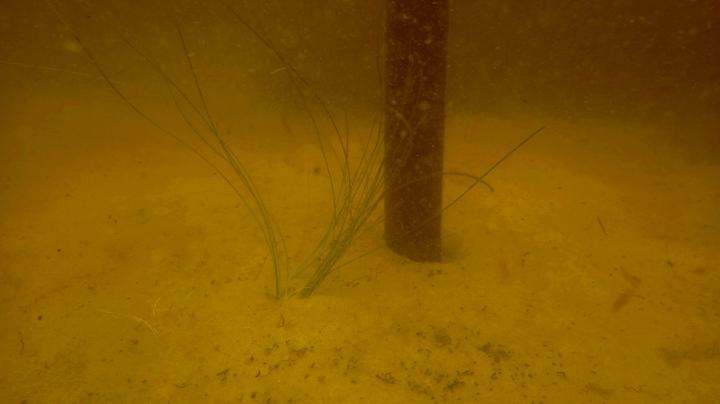
Credit: Heck Lab
The Alabama Department of Conservation and Natural Resources tapped the Dauphin Island Sea Lab to lead a five year project to map and restore submerged aquatic vegetation (SAV) across coastal Alabama. The project is one of two recently awarded to ADCNR by the Gulf Coast Ecosystem Restoration Council.
Along with the mapping and restoration of the state of Alabama’s SAV, the project funds cover the enhancement and addition of educational resources such as signs, brochures, and kiosks explaining the importance of SAV and the restoration project at public boat launches, restoration areas, and public distribution.
Since 2002, coastal Alabama’s SAV extent and species composition has been mapped an average of every six years. This project cuts that time in half, from recommendations based on other State’s programs, to be mapped at least twice over a six to eight year period. The last time the SAV areas were mapped was in 2015.
The aerial mapping will cover all of Mobile and Baldwin counties, including the Mobile-Tensaw Delta. From the air, SAV beds appear as dark spots, and those spots will be photographed and mapped on paper. Once the aerial mapping detail is complete, the team will verify the areas with ground-truthing by visiting a random subset of areas and confirming the presence or absence of SAV.
“There are times that what appears as SAV from the air is not, and what appears not to be SAV can turn out to be a sparse bed,” Dottie Byron in Dr. Ken Heck’s lab explained.
The project funds cover the restoration of three zones in the coastal Alabama area. The team will work to bring back to life an area in the Mobile Delta once known to flourish with Vallisneria sp., commonly known as tape grass. Another area of tape grass restoration will occur near the Lillian Bridge in Baldwin County. The hurricane season of 2004-2005 and the subsequent drought thinned out these areas.
“Homeowners near the Lillian Bridge have asked the state if there was a way to restore it, because it can stabilize the shoreline and protect against further erosion,” Dr. Ken Heck said. “That is what we’re hoping to do with this project. Re-establish that stabilization.”
Similar to what has been done in tape grass restoration projects in the Chesapeake Bay area, Dr. Heck said they will create a nursery to grow seeds into seedlings that will be planted in both of these freshwater areas. Once the nursery is in place, it should take about three to six months to have seedlings ready to plant.
The seedlings will be planted in clumps of four to five, and then caged to protect them as they set their roots and become established. The cages will be created from mesh covered PVC piping that will not be a hindrance to boat traffic in these areas, but still protect these young plants from being disturbed by stingrays shuffling in the sediment or from manatees looking for a snack.
The third restoration area will be in lower Perdido Bay, which contains shoal grass that is often damaged by boat propellers. For this restoration project, clumps of shoal grass will be planted beneath bird stakes that have been placed in the propeller scars. The birds roosting on the stakes provide fertilization of the shoal grass located below them, spurring growth. These areas will also be caged to protect the newly established shoal grass plants.
It’s expected to take about a year for these restoration areas to establish.
To read more on this project, click here. Work is slated to begin in 2019.
###
Media Contact
Angela Levins
[email protected]
251-591-1865
Original Source
http://www.




